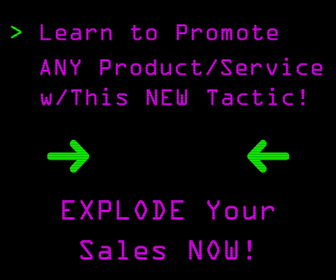Influencer marketing is definitely en vogue right now in the digital marketing world.
If you're like most entrepreneurs and small business owners, you've probably considered trying it out for yourself.
Social media, blogging, Youtube, and other online communication tools have created a new class of public figures known as “micro-influencers.”
They're not quite celebrities, but at the same time, they've got a pretty sizeable following. (For example, they might have 100,000 followers on Instagram or Twitter.)
Bloggers and social media personalities who talk about things related to your particular niche can be a great resource for getting your brand and your products in front of a whole new audience.
Of course, they're not going to promote you for free.
In some cases, lower level influencers will give you a shout out in exchange for some free stuff.
But generally speaking, you're going to end up paying money. So there's a financial investment involved.
But how do you figure out if you've gotten a decent return on that investment?
In a recent blog post, Convince & Convert offers four ways that you can track the revenue that your influencer marketing campaign brings in.
Goal: Revenue
Now let’s talk about what people usually think of when they hear “ROI.”
How do you know what your influencer marketing campaign has returned in terms of revenue to your bottom line?
How can you measure your revenue earned versus dollars spent?
This is actually easier to track than you might think. Here are four ways to measure your return on monetary investment.
Affiliate Links
Combining your influencer marketing campaign with affiliate marketing is one of the simplest ways to track your ROI in terms of dollars earned directly through influencers.
Generating a unique affiliate link for an influencer allows you to track online sales made through their social channels and blog posts.
Influencers typically receive commission from these sales.
These links will also provide data around the number of clicks to the brand’s website, the number of sales, and the average order value for those sales.
It’s important to remember that affiliate links do have some tracking limitations.
Sometimes a purchase can occur as many as 90 days after a shopper sees a product on an influencer’s site.
Since the cookie duration for affiliate links is normally just 15–30 days, if that shopper buys the product online or in-store, you won’t be able to trace the purchase to influencer content, even if that was what drove the sale.
Promo Codes
Custom promo codes allow you to track the impact of your influencer campaign beyond immediate sales.
As mentioned above, not all consumers will make a purchase immediately upon seeing an influencer’s post, even if the content ultimately inspires their buying decision.
In this sense, affiliate links only reveal part of your ROI.
Promo codes help you track “down the line” purchases spurred by influencer marketing.
Most e-commerce sites like Shopify or WooCommerce will allow you to generate promo codes easily that you can provide to your influencers.
Google Analytics
Google Analytics is another incredibly powerful tool for tracking online sales.
By setting up an “Event” goal, you can see which of your online customers visited your e-commerce site from an influencer’s blog or social channel, giving you a reliable assessment of ROI on e-commerce sales.
Working with an Influencer Marketing platform like Shopping Links, you can also see this important metric in the overall results.
Our results page also shows you how many people visited a blogger’s website while they were promoting your brand.
Isolated Marketing
Isolated marketing is a way to measure an influencer’s impact on sales no matter when or where the purchase takes place.
With this method, you select a special “test” product that, for a period of time, you promote only through influencer marketing.
Isolating your marketing efforts allows you to track sales throughout the entire funnel, including in-store purchases.
Your test will also give you a more complete picture of your consumers’ buying behavior, from which you can better gauge the total sales you’re likely to generate from influencer marketing in future campaigns.
The above examples of ROI demonstrate some of the ways to measure influencer marketing’s impact, but they are by no means complete!
Influencer marketing also provides the intangible benefits of a third-party endorsement and an SEO boost from the number of organic conversations (and links to your website) taking place around your brand.
Although there are many ways to measure the success of influencer marketing, any individual measurement of ROI is only a piece of the overall value.
You can find more advice on setting and tracking specific goals for influencer marketing campaigns in the full article from Convince & Convert.
CHALLENGE Yourself to Profit!
Free Download: Build Your Profit-Generating Online Business With This Free Blueprint
Sign Up, follow the easy steps and You'll get the tactics, strategies & techniques needed to create your online profit stream. It's free!



